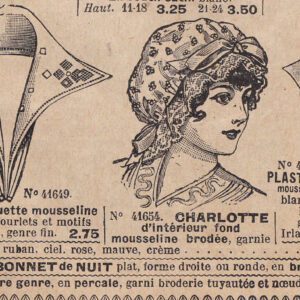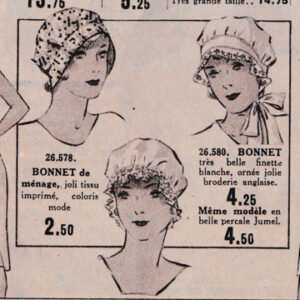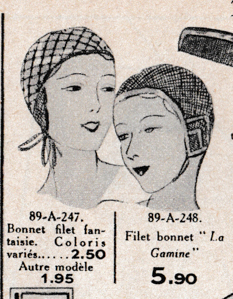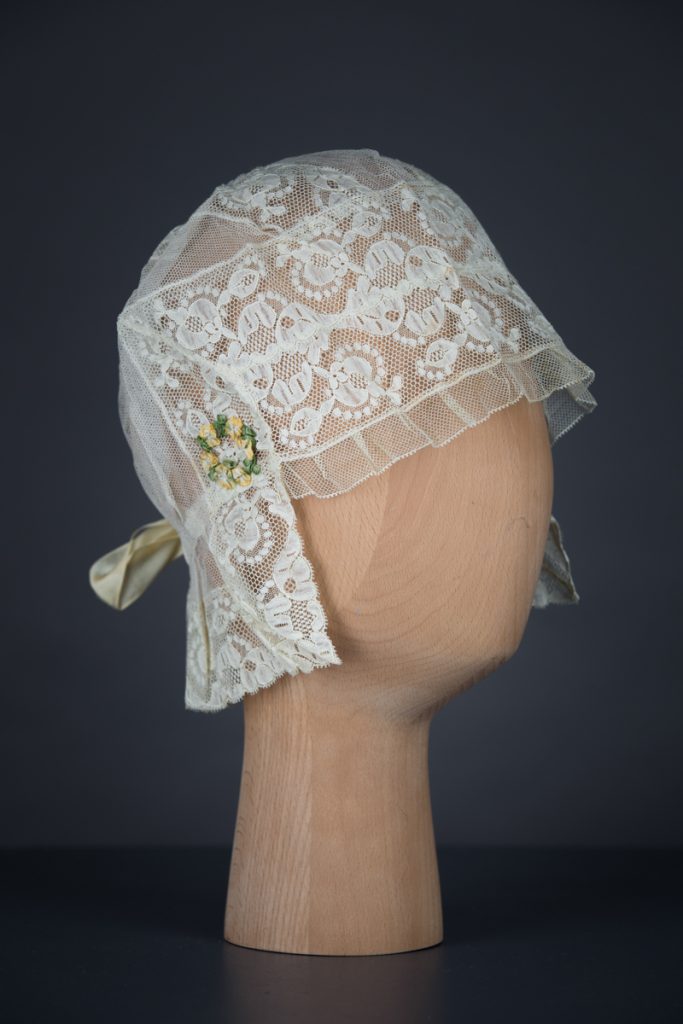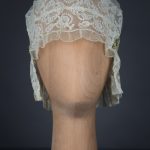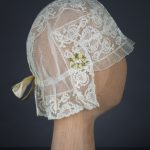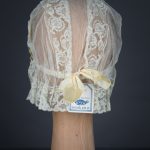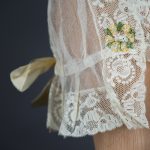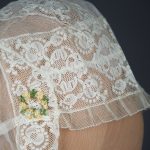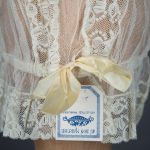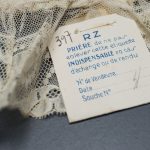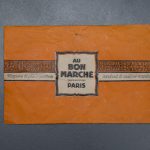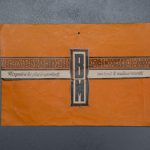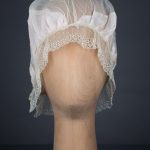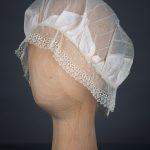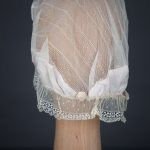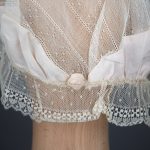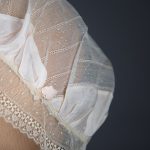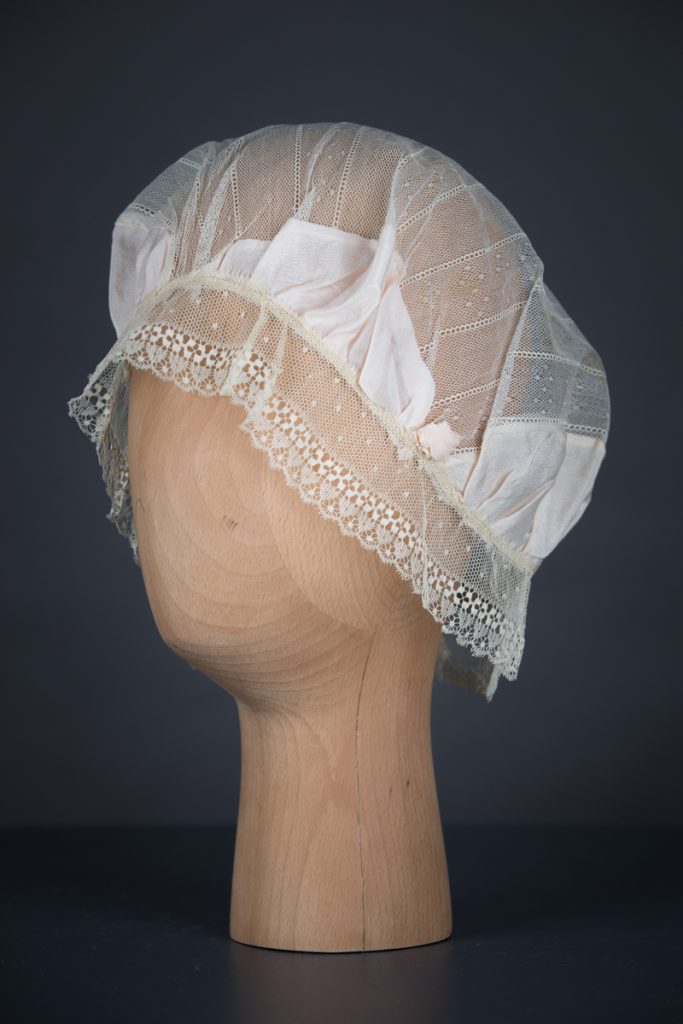Caps were offered at a great variety of price-points and while one could buy them at luxury department stores, many publications catering towards a female audience included instructions or patterns on how to make them at home. In 1927 for example The Manchester Guardian printed instructions on how to embroider a crêpe-de-Chine boudoir cap in cross-stitch which they promised would give “a quick and effective as well as dainty result” (Manchester Guardian, 13 Sep 1927, 6). In her autobiography Ethel Mannin remembered that “a few yards of narrow lace and ribbon and a bit of net” were enough to make one for yourself (Mannin, 70).
In their work on English undergarments the Cunningtons discuss ‘class distinctions’ as one of the roles of underwear (Cunnington, 14). Boudoir caps are an exception here since they were actively blurring class distinctions. While they were associated with the upper classes who could afford to buy them and who had the rooms in which to wear them, women of lower status with lesser financial means were still able to wear them. Caps helped these women practice ‘elegant economy’ and dress in ways that would cost little but create the illusion of wealth.
